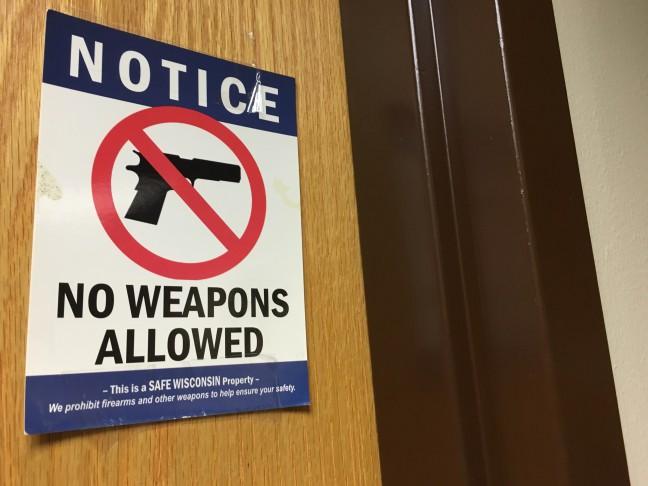In the aftermath of the Feb. 14 shooting in Parkland, Florida, one more life hangs in the balance. Of the ten deadliest shootings in U.S. history, Nikolas Cruz is the only gunman to have been taken alive, presenting the possibility of a death penalty trial.
The chief prosecutor in Broward County said the shooting at Marjory Stoneman Douglas High School “certainly is the type of case the death penalty was designed for,” calling the massacre “absolutely horrific and tragic.” Whether or not Cruz receives the death penalty will weigh heavily on his mental state. In 2015, James Holmes, the man responsible for the 2012 mass shooting in Aurora, Colorado, avoided the death penalty, citing a history of mental health problems. Cruz’s defense team has discussed the possibility of a similar defense, arguing a lifetime of improperly treated mental health issues coupled with the lack of a substantial support system led to him committing the act.
Many people feel the victims from Parkland would not receive justice without Cruz’s execution. Generally speaking, proponents of the death penalty characterize the punishment as matching the crime and highlight the unequivocal reduction in recidivism, as well as the possibility of deterring potential future criminals.
In the 1972 Furman v. Georgia case, the Supreme Court of the United States voted 5-4 to abolish capital punishment. But in 1976, the case of Gregg v. Georgia effectively ended the de facto moratorium on capital punishment, reinstating its use with expanded provisions ensuring prevention of proceedings being “cruel and unusual.”
Improved gun control policy desperately needed after Florida high school shooting
A study published in the Stanford Law Review looked at homicide rates in states with the death penalty, as compared to those in the six states that did not reinstate the death penalty after the 1976 decision. The study determined there was not a significant difference in crime rates between the two groups of states, suggesting capital punishment does not act as an effective method of crime control.
The American Civil Liberties Union argues, “a punishment can be an effective deterrent only if it is consistently and promptly employed. Capital punishment cannot be administered to meet these conditions.” In a report compiled by the Death Penalty Information Center, police chiefs from around the country cited the death penalty as the least effective and least cost-effective form of crime control. Former Manhattan District Attorney Robert M. Morgenthau said, “the death penalty actually hinders the fight against crime.”
Aside from the empirical evidence against its efficacy in crime prevention, as well as the cruelty in the often botched procedures, capital punishment is hypocritical and confusing. Why is killing people wrong in one situation, but acceptable in another? Why is it OK to remediate death with more death? Point blank, we as a society cannot claim to value life while simultaneously justifying publicly and deliberately killing people.
Americans seem to have a problem with knowing how to respond appropriately to violence. Murder — even that which is court-ordered — is not the proper response to murder. The proper response to gun violence is not more guns. The “good guy with a gun, bad guy with a gun” (or any kind of motivated killing) argument is simply hypocritical and unfounded. Who is to determine what kinds of murder or what kinds of shootings are moral, and which are not?
President Donald Trump’s support for arming school teachers and administrators presents the same contradiction — if we want schools to be safer, the solution is not to legalize the presence of the very tools used to commit such violence.
The extreme prevalence of violence in our society is dangerous and frightening, and legalizing such actions only further normalizes it. Study after study cites the impact exposure to violence at a young age can have on desensitization and normalization of such behavior, in turn leaving kids more prone to committing acts of violence. Allowing and encouraging teachers to carry weapons around schools would only increase this exposure, further desensitizing children to gun violence.
The solution to violence is not to combat it with more violence. Where is the line? What kind of shootings are acceptable? At what point is murder appropriate and justifiable? When is it OK to carry a lethal weapon into a classroom full of eight-year-olds?
The bottom line is it should never be acceptable. Killing people is wrong. That can’t change just because one judge and a jury of 12 decide it’s alright in one situation. Guns are dangerous and should not be in schools. Those standards can’t change because of a potential salary bonus.
We have a problem with violence. If we want to create a safer society, the solution is less violence, despite how “justifiable” we think it may be in certain situations. We desperately need to reduce the prevalence of violence in our country because realistically, more than 320 million lives currently hang in the balance.
Cait Gibbons ([email protected]) is a sophomore majoring in Chinese with a certificate in statistics.














